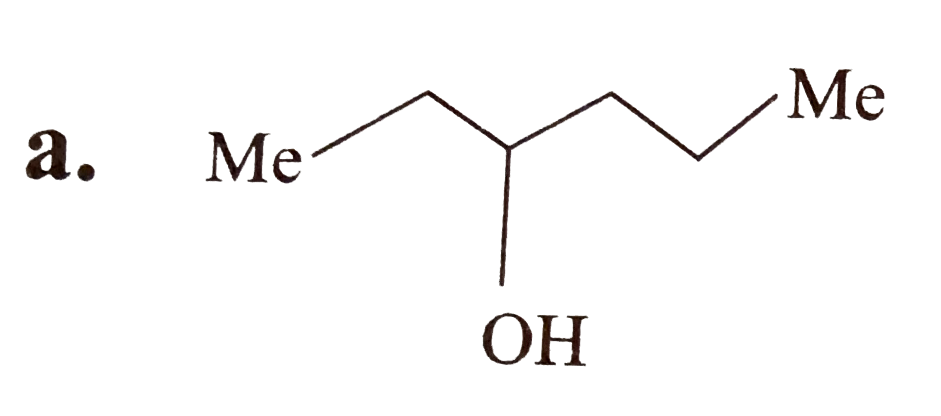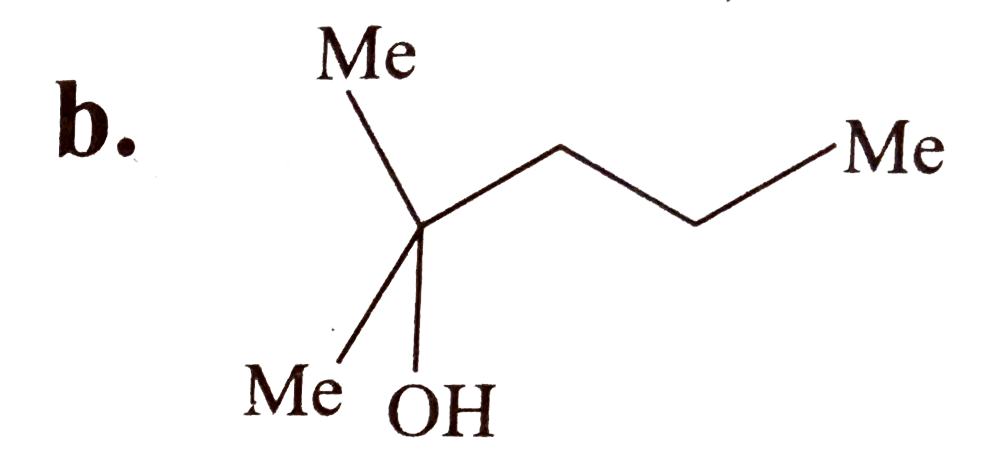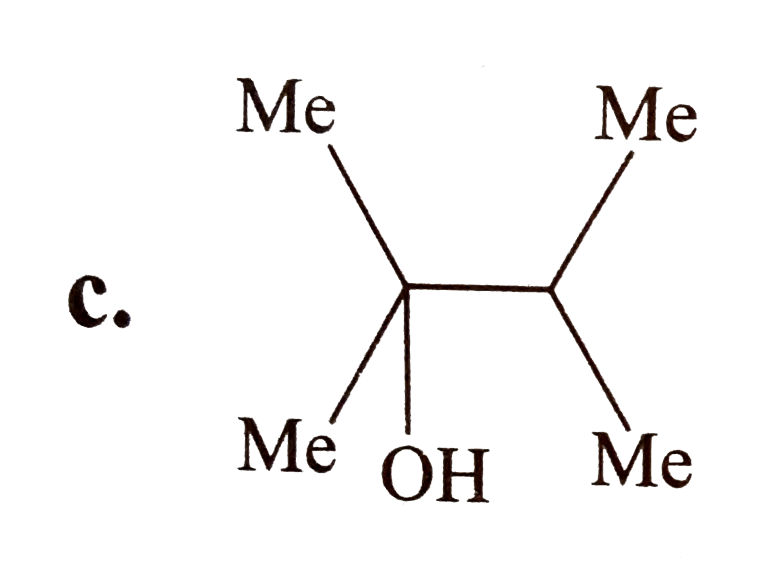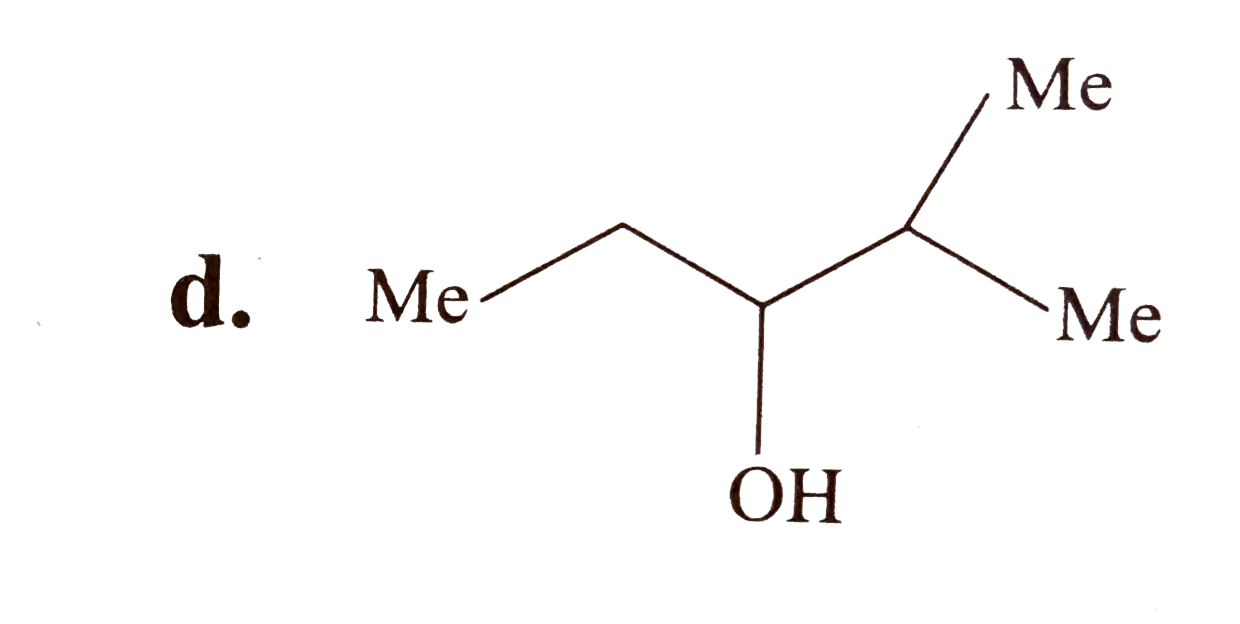Arrange the following set of compounds in order of their decreasing relative reactivity with an electrophile, E+
(a) Chlorobenzene, 2,4-dinitrochlorobenzene, p-nitrochlorobenzene
(b) Toluene, p−H3C–C6H4–NO2,p−O2N–C6H4–NO2.
The correct Answer is:(a) Chlorobenzene>p-nitrochlorobenze> 2,4-dinitrochlorobenzene
(b)Tolune>p−CH3−C6H4−NO2>P−O2N−C6H4−NO2
To solve the problem of arranging the given compounds in order of their decreasing relative reactivity with an electrophile (E+), we need to analyze the electron-donating and electron-withdrawing effects of the substituents present in each compound.
Part (a): Compounds - Chlorobenzene, 2,4-dinitrochlorobenzene, p-nitrochlorobenzene
1. Identify the substituents:
- Chlorobenzene (Cl)
- 2,4-Dinitrochlorobenzene (2,4-NO2)
- p-Nitrochlorobenzene (p-NO2)
2. Determine the effects of substituents:
- The nitro group (NO2) is a strong electron-withdrawing group due to its -I (inductive) and -R (resonance) effects. This decreases the electron density on the benzene ring, making it less reactive towards electrophiles.
- Chlorine (Cl) is also an electron-withdrawing group, but it has a +R (resonance) effect, which can donate electron density to the ring, making it less deactivating compared to NO2.
3. Rank the compounds:
- Chlorobenzene: Least electron-withdrawing effect, thus most reactive towards electrophiles.
- p-Nitrochlorobenzene: Contains one NO2 group, which withdraws electron density, making it less reactive than chlorobenzene but more reactive than 2,4-dinitrochlorobenzene.
- 2,4-Dinitrochlorobenzene: Contains two NO2 groups, which significantly withdraw electron density, making it the least reactive towards electrophiles.
Final Order for Part (a):
1. Chlorobenzene
2. p-Nitrochlorobenzene
3. 2,4-Dinitrochlorobenzene
Part (b): Compounds - Toluene, p-H3C–C6H4–NO2, p-O2N–C6H4–NO2
1. Identify the substituents:
- Toluene (C6H5-CH3)
- p-H3C–C6H4–NO2 (p-Nitrotoluene)
- p-O2N–C6H4–NO2 (2,4-Dinitrotoluene)
2. Determine the effects of substituents:
- Toluene has a methyl group (CH3), which is an electron-donating group (+I effect), increasing electron density on the benzene ring and making it more reactive towards electrophiles.
- p-Nitrotoluene has one NO2 group that withdraws electron density but is still influenced by the methyl group, making it less reactive than toluene but more reactive than dinitrotoluene.
- p-O2N–C6H4–NO2 has two NO2 groups, which significantly withdraw electron density, making it the least reactive towards electrophiles.
3. Rank the compounds:
- Toluene: Most reactive due to the electron-donating effect of the methyl group.
- p-Nitrotoluene: Moderately reactive due to the balance between the methyl group and the nitro group.
- p-Dinitrotoluene: Least reactive due to the strong electron-withdrawing effect of two nitro groups.
Final Order for Part (b):
1. Toluene
2. p-H3C–C6H4–NO2 (p-Nitrotoluene)
3. p-O2N–C6H4–NO2 (p-Dinitrotoluene)
Summary of Final Orders:
- Part (a): Chlorobenzene > p-Nitrochlorobenzene > 2,4-Dinitrochlorobenzene
- Part (b): Toluene > p-Nitrotoluene > p-Dinitrotoluene
- Chlorobenzene (Cl)
- 2,4-Dinitrochlorobenzene (2,4-NO2)
- p-Nitrochlorobenzene (p-NO2)
- The nitro group (NO2) is a strong electron-withdrawing group due to its -I (inductive) and -R (resonance) effects. This decreases the electron density on the benzene ring, making it less reactive towards electrophiles.
- Chlorine (Cl) is also an electron-withdrawing group, but it has a +R (resonance) effect, which can donate electron density to the ring, making it less deactivating compared to NO2.
- Chlorobenzene: Least electron-withdrawing effect, thus most reactive towards electrophiles.
- p-Nitrochlorobenzene: Contains one NO2 group, which withdraws electron density, making it less reactive than chlorobenzene but more reactive than 2,4-dinitrochlorobenzene.
- 2,4-Dinitrochlorobenzene: Contains two NO2 groups, which significantly withdraw electron density, making it the least reactive towards electrophiles.
1. Chlorobenzene
2. p-Nitrochlorobenzene
3. 2,4-Dinitrochlorobenzene
- Toluene (C6H5-CH3)
- p-H3C–C6H4–NO2 (p-Nitrotoluene)
- p-O2N–C6H4–NO2 (2,4-Dinitrotoluene)
- Toluene has a methyl group (CH3), which is an electron-donating group (+I effect), increasing electron density on the benzene ring and making it more reactive towards electrophiles.
- p-Nitrotoluene has one NO2 group that withdraws electron density but is still influenced by the methyl group, making it less reactive than toluene but more reactive than dinitrotoluene.
- p-O2N–C6H4–NO2 has two NO2 groups, which significantly withdraw electron density, making it the least reactive towards electrophiles.
- Toluene: Most reactive due to the electron-donating effect of the methyl group.
- p-Nitrotoluene: Moderately reactive due to the balance between the methyl group and the nitro group.
- p-Dinitrotoluene: Least reactive due to the strong electron-withdrawing effect of two nitro groups.
1. Toluene
2. p-H3C–C6H4–NO2 (p-Nitrotoluene)
3. p-O2N–C6H4–NO2 (p-Dinitrotoluene)
- Part (a): Chlorobenzene > p-Nitrochlorobenzene > 2,4-Dinitrochlorobenzene
- Part (b): Toluene > p-Nitrotoluene > p-Dinitrotoluene
Topper's Solved these Questions
Similar Questions
Arrange the following compounds in order of decreasing reactivity in the elimination (bimolecular ) reaction with C2H5ONa

View SolutionArrange the following in order of decreasing acid strength:
CH3OH,H2O,C6H5OH
View SolutionArrange the following alcohols in the decreasing order of their ease of dehydration with H2SO4.
a.
b.
c.
d.
e.
View SolutionArrange the following compounds in an increasing order of their solubility in water:
C−6H5NH2(C2H5)2NH,C2H5NH2
View SolutionArrange the following alchols in the decreasing order of their reactivity with HRr :
(1) C6H5CH2OH
(2) (C6H5)2CHOH
(3) (C6H5)3COH
View SolutionIdentify the correct of reactivity in electrophilic substitution reaction of the following compounds.
(1) Benzene
(2) Toluene
(3) Chlorobenzene,
(4) Nitrobenzene.
View SolutionWhich of the following organic compounds will undergo addition reactions?
(a)C2H6(b)C2H2(c)C3H8(d)C3H6
View SolutionArrange the following in decreasing order of their basic strength :
C6H5NH2,C2H5NH2,(C2H5)2NH3
View SolutionArrange the following In decreasing order of pKb values
(I) C2H5NH2
(II) PhNHMe
(III) (C2H5)2NH
(IV) PhNH2
View SolutionArrange the following in order of decreasing bond angles
(i)CH4,NH3,H2O,BF3,C2H2 (ii)NH3,NH−2,NH+4
View Solution
